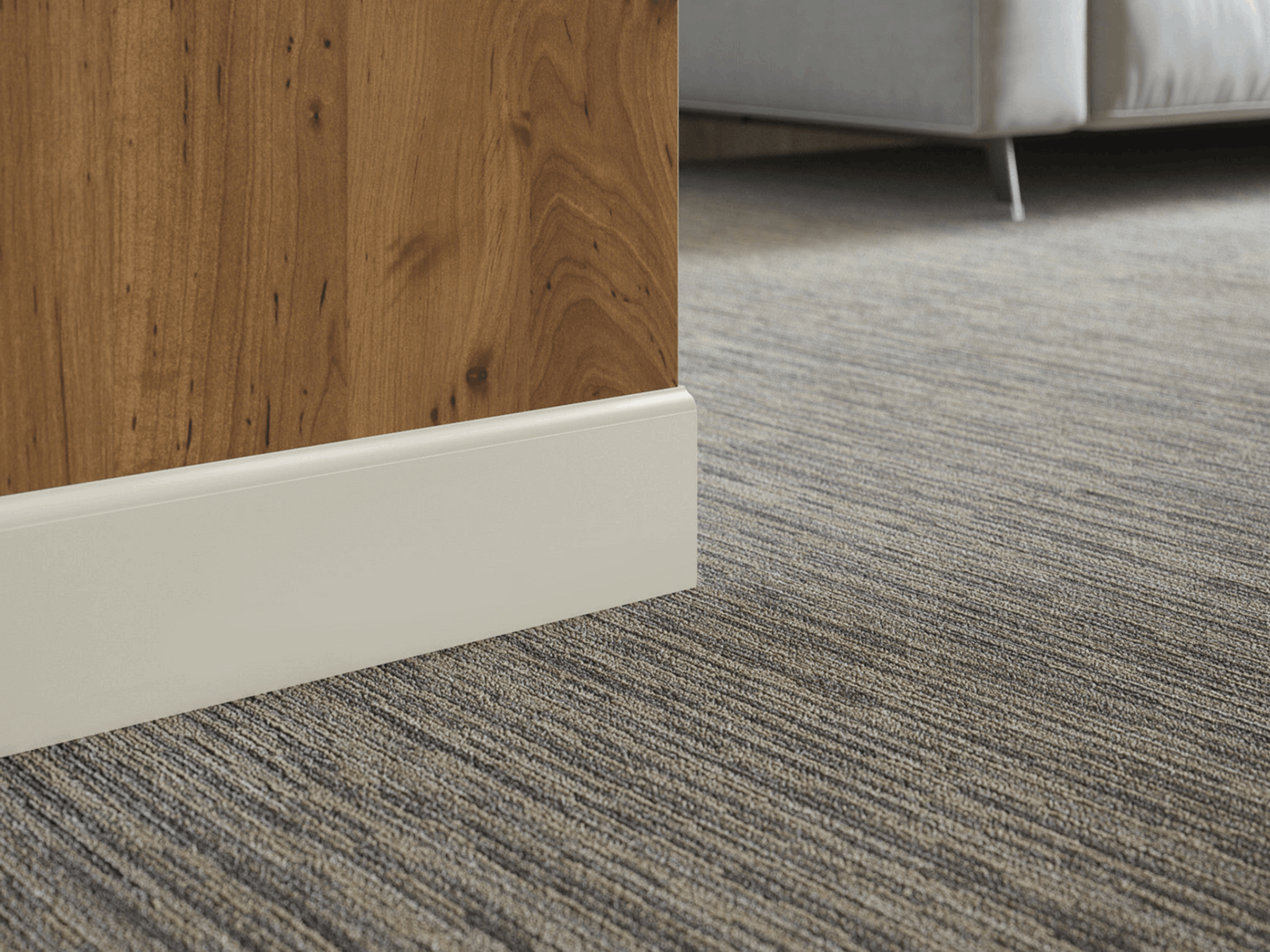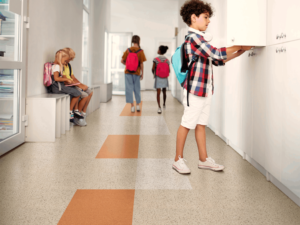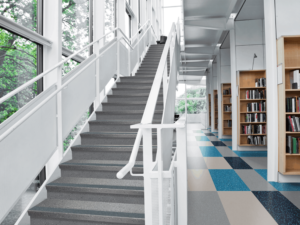Navigating through resilient wall base options can be intricate but crucial for many projects. From choosing the right type for the job to understanding size, style, material, and application area. ASTM F1861 is the Industry Standard Specification for Resilient Wall Base. This standard calls out three types: type TS – vulcanized rubber, type TP – thermoplastic rubber, and type TV – vinyl, group 1 – solid, or group 2 – layered. There are also style descriptions based on the shape of the wall base. These are style A – straight, style B – cove, style C – butt-to, and style D – sculptured.
Need help sorting through the noise? Check out this handy guide to help you make a much more informed decision from start to finish.
How to Choose a Wall Base
When choosing a resilient wall base, consider factors like durability, maintenance, aesthetic appeal, and budget. Evaluate the area’s traffic and the expected level of wear and tear. Your choice should balance functionality with design, ensuring it complements the overall aesthetic while providing the necessary protection.
Choosing the Right Size
Selecting the right size of wall base is pivotal for both aesthetic and functional reasons. Height and thickness are determined by traffic and potential abuse. Generally, wall base heights vary – standard options are 2.5″, 4″, 4.5″, and 6″. The rule of thumb is that higher traffic necessitates taller and thicker wall bases.
Exploring Types of Wall Base
Choosing a suitable wall base can significantly impact your space’s durability and aesthetic appeal. Let’s dive deeper into the various types available, ensuring you select the one that aligns perfectly with your project’s needs.
Sculptured Wall Base: Elegance with Ease
Style D, Sculptured Wall Base, offers an architectural accent. This wall base mimicks the elegance of finely milled wood without demanding extensive installation and maintenance. It is indentation, scuff, scratch, and abrasion-resistant, requiring no nailing, priming, or painting. With 16 available profiles, it’s engineered for flexible application to walls, corners, and columns, ensuring a seamless integration into your design.
Vinyl Wall Base: Durable and Practical
Type TV Vinyl Wall Base is a champion in resisting scuffs and maintaining its appearance in heavy traffic and high maintenance areas. The tough matte finish doesn’t just add to its aesthetic appeal; it adeptly hides substrate irregularities, ensuring a smooth and consistent appearance throughout the space. Its durability makes it a practical choice for areas that need to withstand regular wear and tear.
Rubber Wall Base: Flexible and Resilient
Rubber Wall Base takes the lead, formulated to form curves and corners effortlessly for easy installation. The heavy gauge rubber base promises not to fade, crack, scuff, or scratch, ensuring longevity and maintaining its appearance over time. Its flexibility and resilience make it a go-to option for spaces that demand a robust yet adaptable wall base solution. There are three types: Type TS, Vulcanized Rubber is all rubber; type TV – vinyl group 1 – solid, or group 2 – layered; and Type TP, Thermoplastic Rubber is a blend of vinyl and rubber.
Rubber Molded Wall Base: Stable and Sleek
Rubber Molded Wall Base (Type TS, Group 1 Solid) is crafted to prevent shrinkage or expansion, providing a stable and reliable wall base option. Molded to ensure dimensional stability, it offers a smooth satin finish that enhances its aesthetic appeal and helps conceal substrate irregularities. Its stability and sleek appearance make it a fitting choice for spaces that require a polished and steadfast wall base.
Cove Base vs Straight Base: Understanding the Difference
Cove and Straight bases serve similar purposes but differ in profile and application. With regards to cove bases, they feature a curved profile where the base meets the floor, making them ideal for areas where hard surfaces or resilient flooring is installed. The cove profile is ideal for areas requiring easy cleaning and maintenance, like hospitals and schools. Straight bases have a flat profile and are used to finish carpet installations in commercial and residential settings for a clean, classic look.
Rubber vs Wood Wall Base: Weighing the Options
Rubber and wood wall base each have their merits and drawbacks. For instance, rubber wall base is durable and flexible and resists scuffing and scratching, making it suitable for high-traffic areas. On the other hand, wood wall base offers a timeless, natural aesthetic but may require more meticulous installation and maintenance.
Choosing the most suitable wall base for any project involves considering various aspects, including size, type, material, and application area. Whether opting for the classic appeal of a sculptured wall base, vinyl’s durability, or rubber’s flexibility, your choice should align with the space’s functional needs and aesthetic desires.
Community’s Suburban Wall Base is the final element of style to transition a wall to the floor and bring a room together. Interested in learning more? Order Samples or reach out to us and start your next community today!





